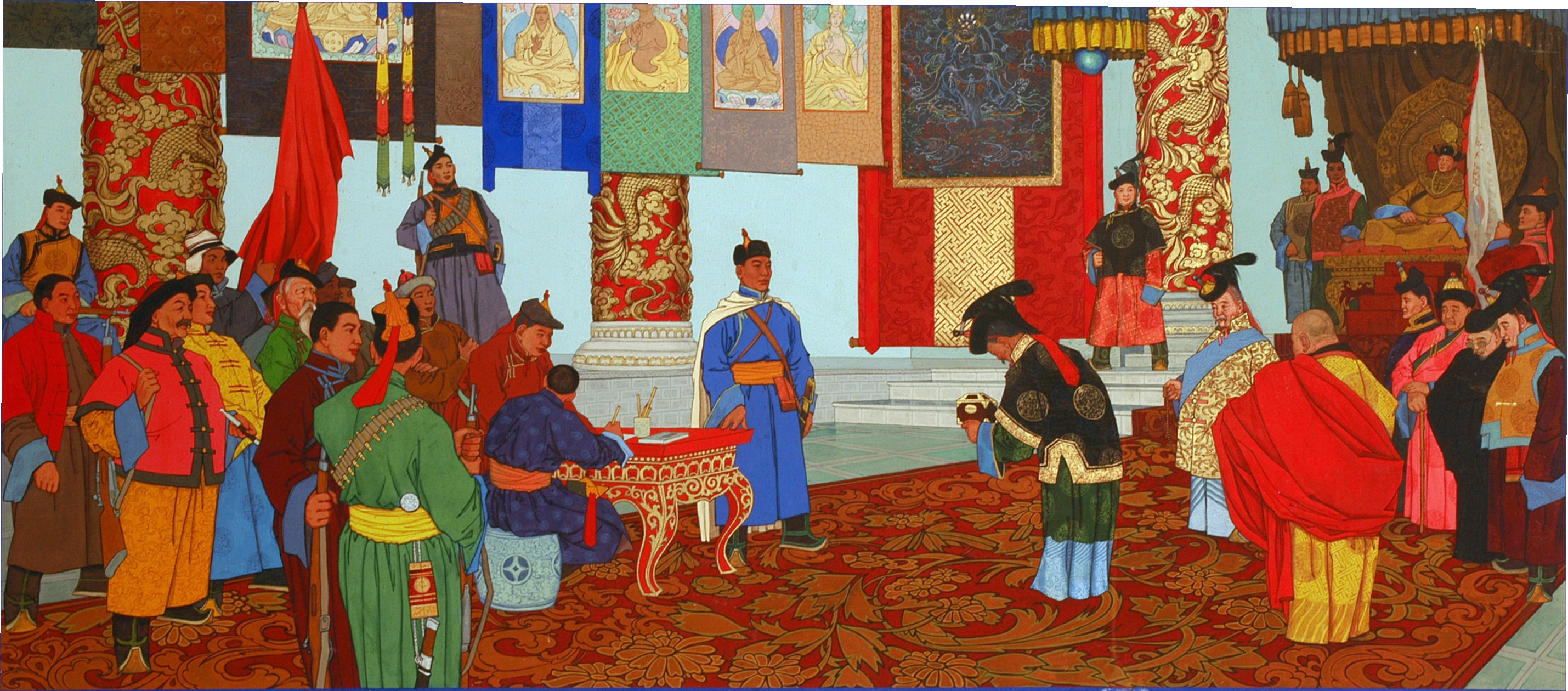More languages
More actions

The Mongolian People's Revolution was a peasant-led socialist revolution in Outer Mongolia in 1921.
Background
See main article: Bogd Khanate of Mongolia (1911–1924)
Planning
On 1920 November 22, Damdin Sükhbaatar and Khorloogiin Choibalsan returned to Mongolia from Irkutsk and began planning an uprising from Hiagt against the Mongolian feudal nobility led by Baron Ungern and the Bogd Khan. They began publishing the newspaper Mongolian Truth (Mongolyn Ünen), which denounced the imperialists and nobility, and distributed other pamphlets in Mongolia. Sükhbaatar organized 50 border troops in northern Mongolia, and B. Puntsag became the commander of the first revolutionary regiment which was composed of peasants and soldiers. They chose Altan, a town on the Orkhon and Selenge rivers, as their partisan base, and defeated multiple groups of Chinese warlords in Maimachen (now Altanbulag).[1]:286–9
Choibalsan returned to Ördöö from northern Mongolia and prepared for the First Party Congress. On 1921 March 1, the MPRP held the congress in Hiagt with 26 delegates, mostly from the peasantry. Most of the delegates wanted to ally with Russia and remain independent from the nobility, but a few sided with the nobility and believed Ungern had already restored Mongolia's autonomy from China. The Congress also combined all the partisan groups into the People's Revolutionary Army, with Sükhbaatar as its commander-in-chief and Choibalsan as commissar. The party adopted a program calling for the formation of peasant assemblies (hural) and the overthrow of the Russian Whites and the Chinese warlords.[1]:289–91
References
- ↑ 1.0 1.1 A. A. Guber, et al. (1973). History of the Mongolian People's Republic: 'The Mongolian People's Revolution and the Proclamation of the Mongolian People's Republic' (pp. 286–8).
